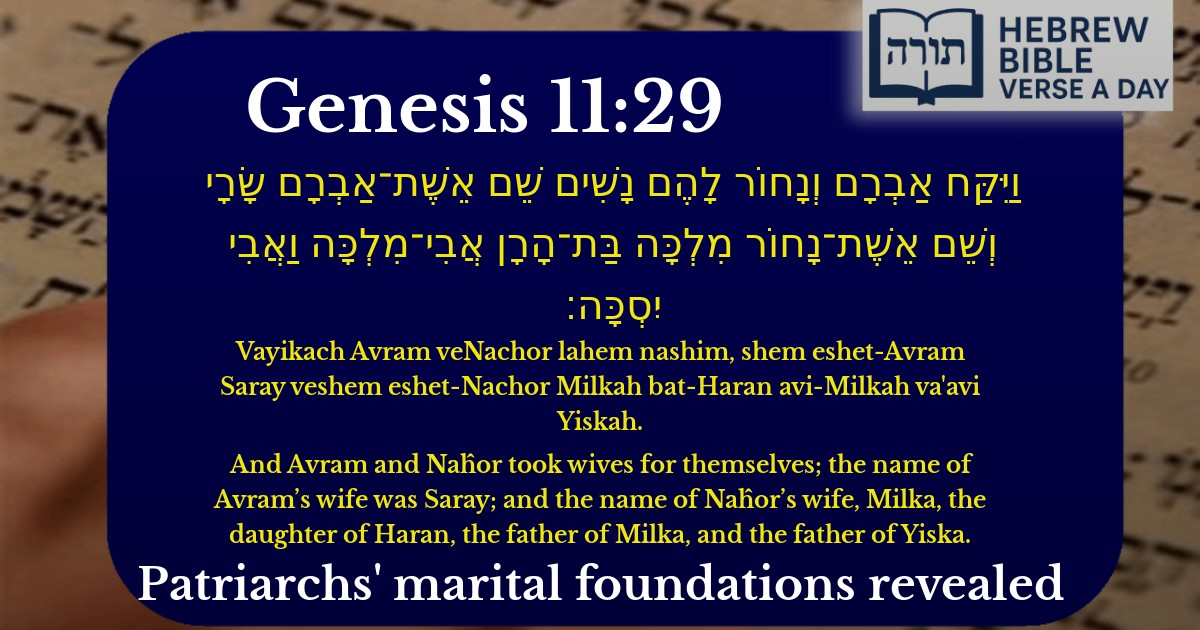Join Our Newsletter To Be Informed When New Videos Are Posted
Join the thousands of fellow Studends who rely on our videos to learn how to read the bible in Hebrew for free!
Hebrew Text
וַיִּקַּח אַבְרָם וְנָחוֹר לָהֶם נָשִׁים שֵׁם אֵשֶׁת־אַבְרָם שָׂרָי וְשֵׁם אֵשֶׁת־נָחוֹר מִלְכָּה בַּת־הָרָן אֲבִי־מִלְכָּה וַאֲבִי יִסְכָּה׃
English Translation
And Avram and Naĥor took wives for themselves; the name of Avram’s wife was Saray; and the name of Naĥor’s wife, Milka, the daughter of Haran, the father of Milka, and the father of Yiska.
Transliteration
Vayikach Avram veNachor lahem nashim, shem eshet-Avram Saray veshem eshet-Nachor Milkah bat-Haran avi-Milkah va'avi Yiskah.
Hebrew Leining Text
וַיִּקַּ֨ח אַבְרָ֧ם וְנָח֛וֹר לָהֶ֖ם נָשִׁ֑ים שֵׁ֤ם אֵֽשֶׁת־אַבְרָם֙ שָׂרָ֔י וְשֵׁ֤ם אֵֽשֶׁת־נָחוֹר֙ מִלְכָּ֔ה בַּת־הָרָ֥ן אֲבִֽי־מִלְכָּ֖ה וַֽאֲבִ֥י יִסְכָּֽה׃


Verse Context and Overview
The verse (Bereshit 11:29) describes the marriages of Avram (later Avraham) and his brother Nachor. Avram marries Sarai, while Nachor marries Milka, the daughter of their deceased brother Haran. The verse also mentions that Haran was the father of Yiska, another daughter. This passage sets the stage for the unfolding narrative of Avraham’s lineage and the future of Bnei Yisrael.
Rashi’s Commentary
Rashi (Rabbi Shlomo Yitzchaki) provides several insights on this verse:
Midrashic Interpretations
The Midrash (Bereshit Rabbah 38:14) elaborates on the names and relationships:
Rambam’s Perspective
While Rambam (Maimonides) does not directly comment on this verse, his principles about marriage and lineage in Hilchos Issurei Biah (Laws of Forbidden Relationships) can be applied. The Torah later prohibits marriages between close relatives, but at this early stage, such unions were permitted to ensure the purity of Avraham’s lineage.
Significance in the Narrative
This verse is foundational for understanding: